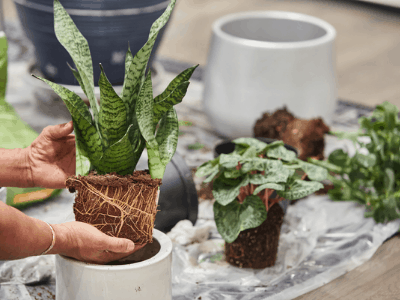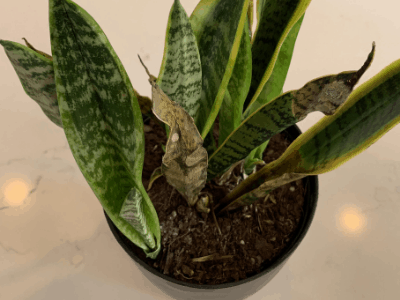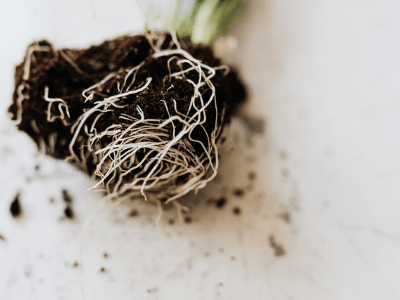
Sansevieria Trifasciata
Why My Snake Plant Have Root Rotting?
An exotic looking house plant referred to as Snake Plants, these attractive plants are ideal for beginners…
…who wish to learn about indoor gardening and those with low light conditions inside their homes.
A very wide selection of Sansevieria trifasciata are available in several varieties from Black Coral to Laurentii and Cyclindrica.
They are wonderfully versatile and complementary to almost any type of interior design, making them a fantastic houseplant to own.
It is known by several common names such as Snake Plant and Mother-in-Law’s Tongue and is available in most garden centres.
These plants are one of the most purchased houseplants from the entire store around America…
…and are always restocked with bringing in fresh stock and varieties on a weekly basis.
An upright growth of Sansevieria plants, which have spear-like leaves which grow vertically…
…makes them ideal for small narrow spaces including hallways and corners.
Varieties have a remarkable variation of leaf color, with black and green leaves, variegated yellow/green leaves…
…yellow/silver leaves, as well as vertical patterns of coloration besides horizontal patterning.
Several varieties of Snake Plants are available in dwarf forms. They typically have a squat growth pattern….
….and are commonly called Birds Nest Snake Plants.
These varieties are great desk plants, as they require little natural light.
This plant would be highly adaptive to varied lighting conditions, handling anything from low light…
…to bright indirect to even some direct sun. It tends to require less water than most house plants…
…and prefers dry soil conditions. These plants are a favorite among gardeners due to their unique rhizomes…
…which hold much of the nutrients and moisture a plant requires between watering.
These fleshy roots are also susceptible to root rot from overwatering.
Before that here we have story from Keanu about his experience having root rotting issue on snake plant
Let us hear Keanu’s story
My snake plant has been growing for the past year, but it is showing signs of root rot. I love my snake plant…
…because something about the way it slithers around on its little roots makes me happy.
It’s unfortunate that this one got sick, and I’m not sure how to prevent this from happening again in the future.
So for bringing this back to life state again, I need to do some researches about root rotting itself by myself…
...cause nobody around here in my circle can help me about that and have and experience…
…encountering root rotting on snake plant! After a long journey and research about root rotting…
…now I tried to applicated it on my snake plant and hoping this method will be works well on it.
In 3 months, out of my expectation my snake plant now back in to the normal and healthy state! I’m so proud of my self!

Like all succulents, the snake plant is susceptible to root rot in soggy conditions, and droopy snake plant leaves often result when the plant is overwatered.”
Mary H. Dyer, Credentialed Garden Writer from gardeningknowhow.com
Here’s the mainn thing…
Basic Snake Plant Care
Snake plant tends to have an indifferent relationship with lighting and humidity but can be extremely fussy…
…about the amount of water it receives.
Mother-in-law tongues typically thrive best in small pots with tightly crowded rhizomes.
The plants do not require fertilization, but if you feel like doing something nice for the plant…
…use a half strength houseplant food once a month during the growing season.
These valuable plants enhance the home with tropical beauty, and clean the air.
Spread the love by growing poisonous snake plants at home and give your friends and neighbors a special gift.

Go on…
Why Is My Snake Plant Dying? (Causes And Solutions)
The Snake Plant is one of the most popular houseplants because it is one of the easiest to grow.
This hardy succulent, also known as a Snakeskin Plant or Mother-In-Tongue, Law’s has a reputation for being nearly indestructible.
However, like any other plant, it can succumb to problems, leaving you scratching your head, unsure why your snake plant is dying and how to fix it.
Sansevierias are nearly indestructible plants. As long as they aren’t overwatered. Cacti and succulent potting mixes…
…are ideal for these plants because they drain quickly and don’t stay soggy.
Don’t pack the soil down around them when you pot it up. Filling in the soil and then hitting the sides of the pot…
…to settle it down as far as it can on its own is what I like to do.
This allows water to flow freely while also allowing your plant’s roots to breathe.
What is the cause of the snake plant’s dying? Root rot, exposure to extreme temperature variations…
…insect infestations and fungal problems are the most common causes of snake plant death.

Next up…
So What Is Root Rotting Itself?
Root Rotting
There are a few problems known to Snake Plants, most common of which is root rot due to overwatering…
…especially in the winter months. The roots die back from lack of oxygen or fungus overgrowth.
Healthy roots begin to turn brown and mushy as they perish. Healthy roots turned brown and mushy due to the proliferation of Pythium, Phytophthora, Rhizoctonia, or Fusarium which spread into the roots.
The challenge with root rot is that it often goes unnoticed because it occurs beneath the soil surface and out of sight.
In extreme cases when conditions are perfect, i.e. in pots without drainage holes, root rot can kill the whole plant within ten days.
While snake plants will struggle to survive in pots without drainage holes, there are a number of solutions that you may not have considered. To learn how to grow plants in pots without holes, read my article.
Although it is necessary to pot your snake plant in a well-draining pot, you also want your plant to look good…
…and add to the beauty of your home. You may have some decorative pots with adequate drainage…
…in which to plant your snake plant, but I prefer to place it on a drip tray or inside a more decorative planter.
Here are some of my favorite indoor planter ideas. The roots are first affected, turning brown and mushy…
…which are classic signs of rot. Root rot causes leaves to turn yellow, wilt, or droop, and eventually become mushy.
Once symptoms appear in the leaves, the problem may be beyond repair, putting the entire plant in jeopardy.

Keep going…
Treatment
If you catch the problem early enough, you can repot the plant. Remove as much infected soil…
..as possible before replacing it with new, clean potting soil.
To help prevent reinfection, apply a root treatment containing beneficial mycorrhizal species or dust the healthy roots with sulfur powder.
Sulfur acidifies the soil, making some nutrients less available and limiting the food source for pathogens that cause root rot.
Beneficial mycorrhizae create a hostile environment for unwanted bacteria and fungi; sulfur acidifies the soil…
…making some nutrients less available and limiting the food source for pathogens that cause root rot.
If the root rot has spread far enough, dissect the plant and keep only the healthy parts.
Take cuttings from healthy foliage and root them to propagate a new plant if the entire base is affected.
Prevention
When the top 2-4 inches of soil have dried out completely, water the plants.
During the cooler, winter months, when the plant is dormant, this could mean only watering it every 1-2 months.
Snake plants are perfect for the less-than-careful gardener. For weeks at a time, you can go without watering them.
Your snake plant will easily tolerate 3 weeks or more without water, even in hot, arid conditions…
…so you won’t have to worry about all the ways to water houseplants while on vacation.
Next up…
Exposure To Extreme Temperatures
Snake plants belonged to West Africa, and like other succulents, they prefer warmer temperatures.
When exposed to cold temperatures, the cell walls within your Snake plants are damaged.
As a consequence, the root pathway is disrupted, causing water and nutrients flow to stagnate…
…leading to a plant’s death from lack of moisture.
Symptoms
Even though the plant hasn’t been overwatered, there are signs of scarring on the leaves or yellowing, mushy leaves.
Last but not least…
Treatment
Keep healthy foliage intact by pruning all heavily damaged leaves. Doing so will undermine the healthy growth…
…of the plant. Make sure your Snake Plant is kept somewhere the daytime temperature ranges between 60°C to 80°F…
…and the nighttime temperature ranges between 55°F and 70°F.
Sum Up
See having Snake plant is good choice for you to have! It’s cool, its famous, it’s easy to have and care!
What else do you need? In this pandemic time like this, is a good choice for you to have an new activity…
…and having snake plant is a good choice for you to have!
Conclusion
Last thing for sure. This plant need to be care carefully, remember plant need the “love” too.
Alright that’s all for today! Do you have any questions about all of this?
Or do you want to add some method that can help you for preventing root rotting on your snake plant?
Let me know your recommendation from the comment below.
I hope you can now take care your snake carefully and grow it big!
Thanks for reading this article! Bye!


